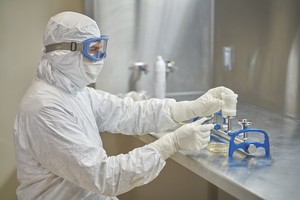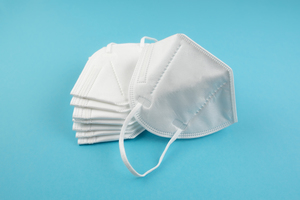

|
Edward Lowton
Editor |


|
| Home> | Health, Safety & Welfare | >PPE | >Sustainable PPE without compromising on protection |
Sustainable PPE without compromising on protection
06 December 2022
The environmental footprint of personal protective equipment is becoming a key concern for companies around the world. However, there are a range of ways to make PPE more sustainable from reducing production waste to curbing emissions throughout the supply chain, all without compromising on performance or protection, says Andrzej Palka

PPE IS critical to protecting workers against occupational injuries and illnesses, now more than ever. During the COVID-19 pandemic, even organisations that had no previous need for PPE had to start providing their employees with appropriate safety equipment.
The increased use of single-use masks, garments, and other disposable safety gear during the pandemic also brought to the fore the environmental impact of PPE.
Companies worldwide are taking a closer look at PPE's environmental footprint, with nearly one in two organisations requiring that their suppliers and partners meet sustainability criteria.
PPE-related environmental challenges
The World Health Organization (WHO) estimated that PPE purchased from March 2020 to November 2021 generated 87,000 tonnes of waste globally. Additionally, a research paper published in Heliyon found that approximately 3.4 billion single-use facemasks/shields were discarded daily. A worrying statistic published in a Nanjing University study estimated that 25,900 tonnes of plastic waste from single-use PPE leaked into the ocean.
Waste is not the only environmental challenge associated with PPE. Suppliers have to ship their products from manufacturing sites to customers all over the world.
A UK study investigated the carbon emissions of the PPE supply chain. The study found that the production and distribution of 3 billion pieces of PPE used by the National Health Service in Great Britain (NHS) between February and August 2020 resulted in over 106,000 tonnes of carbon dioxide emissions.
The research also showed that these emissions could have been reduced by 12% by producing the PPE in the UK instead of importing it. Luckily, there are now effective ways of reducing both waste and emissions.
Reducing PPE waste
The use of recyclable materials is key to reducing waste originating from single-use PPE. Whereas chemically or biologically contaminated PPE cannot be easily recycled for safety reasons, non-contaminated items could be recycled. Therefore, when selecting single-use PPE such as disposable protective garments, it is now possible to choose products made using recyclable materials.
Opting for PPE made using non-ecotoxic materials is another important consideration. When PPE gets contaminated in use, disposal regulations often dictate that the resulting waste be incinerated. PPE manufactured from non-ecotoxic materials reduce the chance of toxin release into the atmosphere during incineration.
Multi-use single exposure garments are another effective way of reducing waste. Typically, chin flaps and zippers are sealed using either self-adhesive tape or Velcro closures. Whereas garments with tape must be discarded after every use (even without contamination), Velcro allows clothing to be worn multiple times over a work shift unless contamination occurs.
Durability is another critical PPE selection criteria. Torn disposable garments must be discarded immediately. Using abrasion and tear resistant materials reduces the risk of damage and therefore the number of garments disposed of.
It is also important to remember that heavier fabrics produce more waste per garment than lighter fabrics at the end of a garment’s life. Therefore, using lighter materials can be beneficial, as long as the protection level is not compromised.
Finally, selecting more sustainable packaging can go a long way towards reducing waste. For example, some of the latest single-use garments are no longer individually packed while the number of Instructions for Use has been reduced from one per garment to one per box.
A more sustainable PPE supply chain
PPE manufacturing can be an energy intensive process, contributing to global carbon emissions. Any efficiency gains made during production have a direct impact on the total energy consumed and therefore the total emissions. Some PPE producers are finding innovative ways to improve energy efficiency and reduce waste.
For example, a Tyvek manufacturing plant in Luxemburg now uses the by-product heat derived from steam generated during polyester production to power the plant. This heat recovery system has made a substantial contribution to reducing factory emissions.
Another DuPont manufacturing site in Spain produces hydrochloric acid, a liquid residual stream derived from the Nomex fibre production process. Instead of neutralising and discarding the hydrochloric acid, the facility now supplies it as a raw material to a local metallurgy company. This initiative will save DuPont enough electricity to power 1,500 homes, while also conserving enough water to supply 350 people.
Shortening supply routes is another key to reducing the lifecycle emissions of PPE along with the lighter weight of the fabric which contributes to reducing environmental impacts during transportation. The reduced weight of the fabrics being transported results in less waste.
Suppliers like DuPont are exploring ways to increase their manufacturing footprint in areas like Europe and minimise their reliance on long transport routes. There are also other advantages to having a more decentralised and agile supply chain, like overcoming the disruption encountered during the pandemic.
Maintaining worker protection at the forefront
The environmental impact of PPE is a growing focus area for organisations, especially those that have instituted corporate policies aimed at reducing their emissions. Manufacturing, transport, use, and disposal of PPE all have opportunities to improve environmental performance.
Whether it be partnering with local industries that use by-products from PPE production, or reducing the packaging used for bulk supply, manufacturers like DuPont are taking steps to reduce PPE waste and emissions.
Nevertheless, PPE will always have worker protection as its primary purpose. The requirements for PPE are continuously evolving, like the new demands for single-use PPE created by the pandemic.
DuPont is constantly developing its PPE products to meet the changing requirements of the industry while reducing the emissions generated through each stage of the PPE lifecycle. In line with this, the company recently released a new e-guide, The HSE Manager's Guide to sustainability considerations for PPE.
Andrzej Palka is Tyvek sustainability leader at DuPont Personal Protection
For more information:
- Russian court ruling
- Online catalogue
- Protection and comfort
- Malthouse toasts a better approach to worker safety
- Latest coverall
- Rewarding innovation
- PPE: A mix of new and established
- Creative twist
- Protection & comfort in Type 5 & 6 categories
- Protective Solutions from DuPont at The Health and Safety Event




















